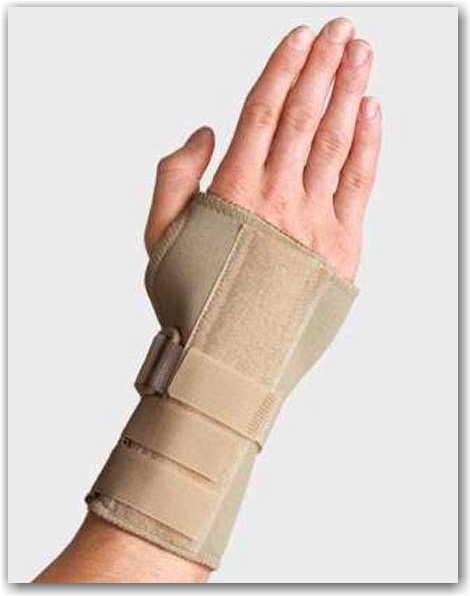What is Carpal Tunnel Syndrome?

Carpal tunnel syndrome (CTS) is a very common hand and wrist problem. CTS is a clinical condition that is caused by compression of the so-called median nerve in where a specific canal locates called the carpal tunnel at the wrist level. The carpal tunnel is a narrow canal surrounded by bones of the wrist joint on the bottom and a structure called the transverse carpal ligament on the roof. Tendons of the fingers and the median nerve itself go through this canal. This nerve is responsible of the sensations for the thumb, index finger, middle finger, and half of the ring finger. In addition, it runs muscles of the thumb so that your thumb is strong. In this disease, the median nerve is compressed inside of the tunnel and complaints occur on the fingers and the whole hand.
What are the Complaints and Symptoms in Carpal Tunnel Syndrome?
The CTS has characteristic signs. A couple or all of the following signs seen below can be recorded with varying degrees:
- Pain
- Numbness
- Tingling
- Prickling
- Dullness in sensation
- Weakness
- Dropping some objects from affected hand
Pain sometimes can radiate to level of the elbow and the arm, even to the shoulder and neck. Numbness and tingling are more common in the thumb, index, and the middle fingers. While these complaints can be seen throughout the day, the nights become even worse. These complaints that disturb sleeping and bother during nighttime can impair the quality of people’s active daily living. Nighttime complaints can sometimes be the first and the only sign. If the disease is too severed, the muscles in the base of the thumb may be weak and atrophied.
Complaints May Increase Especially in Specific Conditions:
- Reading newspapers / books
- Talking on the phone
- Typing
- Driving
What are the Causes of Carpal Tunnel Syndrome?
Usually there is no specific cause. There may be some individual factors. It is more common in women and middle ages, but it can be seen in all ages except children and in both sexes. There may also be some special conditions seen below that increase the pressure on the median nerve and cause carpal tunnel syndrome. These are:
- Inflammation and swelling of the tendon sheaths around the tendons
- Edema (usually occurs in pregnancy and causes swelling of the tissues present in the carpal tunnel)
- Fractures and dislocations of the wrist
- Rheumatologic diseases such as rheumatoid arthritis cause narrowing of the tunnel and compressing the median nerve
- Hypothyroidism (disorder of the thyroid gland)
- Diabetes Mellitus
- Tumors inside of the tunnel
How Can You Realise That You Have Carpal Tunnel Syndrome?
The diagnosis of carpal tunnel syndrome is made by the determination of complaints and clinical examination. Nerve conduction studies (electromyography – EMG) are diagnostic supports with giving objective findings for the severity of the problem. If there is a trauma history, arthritis, other disorders, or limited movement of the wrist, a radiological examination may be required.

How is Carpal Tunnel Syndrome Treated?
- Treatment usually begins with the use of a splint to prevent the wrist movements that increase complaints and allow the swelling in the carpal tunnel to go down. The use of night splints only can help resolve all of the complaints.
- If complaints persist, an anti-inflammatory medication or physical therapy may be used to reduce the swelling around the median nerve.
- Surgical treatment may be recommended if these above treatments did not work or the carpal tunnel syndrome is already in advanced level. The purposes of the surgery in carpal tunnel syndrome are opening and decompressing the tunnel to relieve and release the median nerve; and removing the abnormal thickened tendon sheaths if there is a swelling and thickening in tendons.
Carpal tunnel surgery is usually an out-patient surgery. The patients generally feel relieving immediately 24 to 72 hours after surgery. They gradually start using their hands after this time. Sutures are taken out 12-14 days after surgery. Activities requiring power are not recommended for 4-6 weeks. Complete healing is different in each patient, depending on the age of the patient, general health status, the severity and duration of the complaints of the carpal tunnel syndrome. Complete recovery of the weakness, numbness, and tingling may take 3-4 months in relation to the nerve healing and recovery. Post-operative physical therapy modalities may be necessary.
Prof. Dr. Eftal Gudemez
Orthopedics and Traumatology
Hand Surgery and Microsurgery